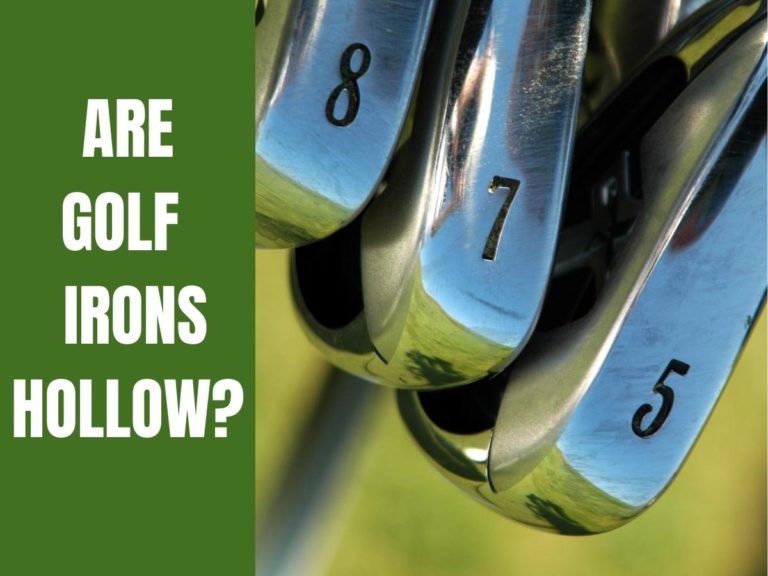Is An Eagle Or Birdie Better In Golf?
Scoring in golf has some odd names, and while most people know what making par is, not everyone is familiar with the ornithological terms given to scores made under the par of the hole. When talking to new golfers, I’m often asked whether an eagle is better than a birdie.
An eagle is better than a birdie in golf, but eagles are more difficult to make during a round, especially for average golfers, while birdies are more feasible. An eagle completes the hole two shots under par, while a birdie completes the hole one shot under par.
The three main ‘bird’ terms for scoring under par are the birdie, the eagle, and the albatross. While the immediate connection to golf may not be apparent, their origins in the game are pretty colorful.
Let’s investigate a little more and find out why an eagle is better than a birdie in golf.

Where Do The ‘Bird’ Terms In Golf Come From?
The golf scoring terms are well known, but not everyone knows how they came about. For example, the term ‘birdie’ was coined from the slang phrase “it’s a bird” in 1899. The story goes that George Crump (who built Pine Valley Golf Course) was playing with the Smith brothers William and AB.
Crumps’ first shot hit a bird in flight, and he knocked his second shot to within inches of the hole! It is said that both Smith brothers exclaimed that his shot “was a bird,” and the putt left Crump one under par for the par-four hole, and thus was the term ‘birdie’ born.
It is now entrenched that scoring a birdie is one under par, so for a par five, a birdie is four shots to get the ball in the hole; for a par four, it’s three, and for a par three, it’s two.
The Eagle In Golf
Most people that watch and play golf will also know about the eagle.
The eagle is completing the hole two shots under the par score. So, for a par five, an eagle is three shots, and for a par four, you need to complete the hole in two shots.
To eagle on a par 5, you’d need to be on the green in two shots from the tee and playing three to hole it. You’d need to drive the green for a par four and then be putting for two to make an eagle.
Eagles on par 5’s are more common than on par 4’s as skilled players can often hit the golf ball far enough to get it on the green in two, while driving a par four accurately and having the ball stay on the green is a little more difficult to achieve.

Although rarely spoken, as the term ‘ace’ is usually quoted, a hole in one on a par three is also an eagle. This is a feat that happens very rarely. Many golfers have played the game for decades and never achieved an eagle on a par 3. I’ve only ever had one, which was several years ago now.
Note: A hole in one is usually celebrated in the bar once the round is completed. Somewhat strangely, the tradition is that the scorer of the hole in one buys drinks for all those present. In my opinion, it should be the other way round!
Many par-four eagles occur from pitch and chip shots that are holed from off the green with the drive landing close enough to the green off the tee.
When looking for a name for a better score than a birdie, the eagle was picked as it is ‘greater’ than a regular bird, and this formula was applied to describe scores better than the eagle.
The Albatross In Golf
This is one of the rarest results you can get in golf, where the hole is completed in three shots under par. This would mean completing a par 5 in two shots and hitting a hole in one on a par 4. You cannot shoot an albatross on a par three hole.
Here are some cool facts about the albatross in golf:
- The albatross is also known as the double eagle in the US. Between 1970 and 2003, only 84 albatrosses were recorded on the PGA Tour.
- The first albatross that was televised live was at the 2012 Masters at Augusta. It was on the 2nd hole, par 5, and was scored by South Africa’s Louis Oosthuizen. It was also the first time this feat had been achieved on that hole.
- The odds of shooting a double eagle are between 1 in a million to 1 in 16 million. And for the average golfer, the odds of a hole-in-one are 12,500 to 1.

But, wait, there is one more big bird to discover!
The Condor In Golf
As rare as the dodo in golf, a condor is where the hole is completed four shots under par. The condor is known as the double albatross or triple eagle and has never been done in the modern game.
To achieve this, you would need a hole in one on a par 5, two on a par six, or three on a par 7. Since there are very few (if any) par 6’s and 7’s left, the only option is to cut the dogleg on par five and drop it in for a hole-in-one!
Check out these interesting facts about the condor in golf:
- As of January 2021, there have only been five recorded condors, with the latest one in December 2020 recorded on a par six at the 18th Hole at Lake Chabot Course in Oakland, California.
- In 2007, 16-Year-old Australian Jack Bartlett made a condor at the 510-yard par-five 17th hole at Royal Wentworth Falls Country Club in New South Wales, Australia.
- In 2002, Mike Crean drove the 517-yard par-five 9th hole at Green Valley Ranch Golf Club in Denver – albeit with the help of Denver’s altitude.
- Another condor occurred in 1995 with a 3-iron on a horseshoe-shaped par five by Shaun Lynch at Teign Valley Golf Club in Christow, England.
- The first condor was recorded in 1962 when Larry Bruce drove into the cup on a 480-yard par-five at Hope Country Club in Arkansas.
- The odds of scoring a condor are so great that they have never been calculated.
Final Thoughts
If you’re just setting out on your golfing journey, you now know that an eagle is better than a birdie.
The odds favor the average player making an actual birdie and very occasional eagle, but with the handicap system in place, shooting birdies and even an eagle become a little less daunting than if you are a scratch player.
Whenever you achieve a birdie or an eagle, it certainly will be a long-lasting memory, and one you should cherish as countless thousands of players may never shoot either in their lifetime.
Related Posts You May Like:






